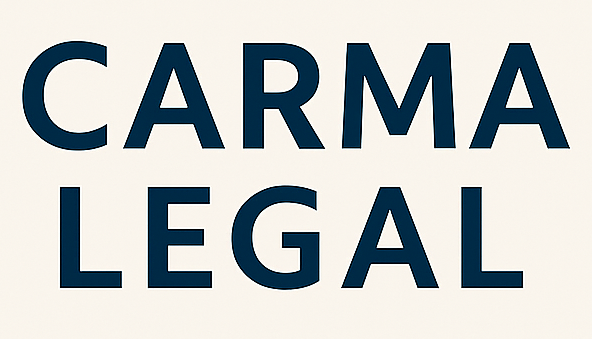Working with an uninsured motorist claim lawyer can protect your rights and help you secure the compensation you need after a crash with a driver who lacked insurance. Whether you were driving, riding as a passenger, walking, or cycling, your policy’s uninsured motorist provisions may cover your medical bills, lost wages, and property damage. Since nearly 13% of motorists nationwide drive without coverage [1], it’s vital to understand how to tap into these benefits and meet all deadlines.
Uninsured motorist protection acts as a safety net when the at-fault party has no insurance or cannot be identified after a hit-and-run. In many states, you must file a claim both within your policy’s notice period and the state statute of limitations. Prompt documentation and the guidance of an experienced attorney can make the difference between a smooth recovery and a denied claim.
Understand uninsured motorist claims
Definition and purpose
Uninsured motorist coverage (UM) is an optional or mandatory add-on to your auto policy that steps in when the at-fault driver lacks bodily injury liability insurance. It can also apply to hit-and-run collisions if the responsible driver cannot be identified. UM coverage typically includes:
- Bodily injury protection for you and your passengers
- Property damage coverage in some states (UMPD)
- Lost wages and future medical expenses
By filing under your own UM policy, you avoid out-of-pocket costs when another driver cannot pay. This safety net is crucial for drivers, passengers, pedestrians, bicyclists, and any insured person injured in the crash.
Who qualifies for a claim
To file an uninsured motorist claim, you generally must:
- Be an insured driver or passenger listed on the policy
- Suffer bodily injury or covered property damage
- Report the accident promptly to both the police and your insurer
- Cooperate with the insurer’s investigation
Some states impose additional restrictions, such as residency requirements or exclusions for certain vehicles. Reviewing your policy and consulting an attorney early will ensure you meet all eligibility criteria.
Common accident scenarios
Uninsured motorist coverage can apply in a variety of situations:
- Rear-end collisions when the other driver has no insurance
- Hit-and-run incidents where the at-fault party cannot be identified
- Pedestrian or bicycle accidents caused by an uninsured motorist
- Multi-vehicle crashes involving an uninsured driver
- Rideshare trips when the driver’s personal policy lacks coverage
Each scenario presents unique challenges, which is why working with a lawyer specializing in uninsured motorist claims can help tailor the strategy to your case.
Recognize filing deadlines
State statute of limitations
Every state sets a deadline for personal injury lawsuits, typically between one and three years from the date of the accident. Missing this deadline can bar you from any recovery, even under your own policy. For example, Ohio generally allows two years for personal injury claims [2].
Policy-specific notice requirements
In addition to state law, insurance policies often require you to notify the insurer of a potential uninsured motorist claim within a short time frame. Some policies demand notice as soon as 24 to 48 hours after the accident to preserve your coverage rights [3]. Failing to comply with these notice provisions may result in denial of benefits.
Tips for timely action
- Review your policy’s notice clause immediately after the crash
- Send written notice by certified mail if recommended
- Keep proof of delivery and all correspondence
- Consult a qualified attorney to verify all deadlines
Document your accident details
Collect the police report
A law enforcement report provides an official record of the crash scene, involved parties, witness statements, and officer findings. Obtain a copy as soon as it’s available and verify that the uninsured status of the at-fault driver is clearly noted.
Preserve medical records
Detailed documentation of your injuries and treatment is the backbone of any personal injury claim. Maintain:
- Emergency room and hospital records
- Doctor’s notes and specialist evaluations
- Physical therapy and rehabilitation bills
- Prescription receipts and medical device invoices
Gather witness information
Eyewitness testimony can strengthen your case, especially when fault or liability is disputed. Collect:
- Names and contact information of bystanders
- Written or recorded statements detailing what they observed
- Photographs of the scene, skid marks, vehicle damage, and injuries
If you were a pedestrian, a pedestrian accident lawyer can assist in gathering and preserving crucial witness evidence.
Evaluate your coverage options
Uninsured versus underinsured
While uninsured motorist coverage applies when the other driver has no liability insurance, underinsured motorist protection (UIM) kicks in when the at-fault party’s policy limits fall short of covering your losses. If you carry both, you’ll need to coordinate benefits.
Coverage types and limits
| Coverage type | Damages covered | Typical limits |
|---|---|---|
| Uninsured Motorist Bodily Injury | Medical expenses, lost wages | Mirrors your liability BI limits |
| Uninsured Motorist Property Damage | Vehicle repair, other property losses | Varies by state, often separate limit |
| Collision coverage | Repairs to your vehicle, regardless of fault | Based on your selected deductible and limits |
When selecting uninsured motorist coverage, experts recommend matching your liability BI limits and setting UMPD limits close to your vehicle’s replacement value [1].
Coordinating with underinsured benefits
If you also have underinsured motorist protection, working with an underinsured motorist claim attorney can help you navigate that additional layer of coverage and ensure you receive the full amount available.
Seek legal representation promptly
Benefits of early consultation
Consulting an attorney soon after the crash can:
- Guarantee all notice deadlines are met
- Preserve critical evidence and witness testimony
- Prevent missteps in dealing with insurance adjusters
- Provide clarity on your coverage and legal options
Choosing the right lawyer
Look for an attorney who:
- Specializes in uninsured motorist and auto injury claims
- Has a proven track record of settlements and verdicts
- Communicates clearly and keeps you informed
- Works on a contingency-fee basis, meaning no upfront costs
When selecting legal counsel, consider firms that focus on insurance disputes, such as an insurance claim lawyer car accident.
Preparing for your first meeting
Bring relevant documents to your consultation:
- Your insurance policy declaration page
- Police report and witness contact information
- Medical records and billing statements
- Photographs of injuries and vehicle damage
A thorough review of these materials helps your attorney build a strong strategy from day one.
Navigate the claims process
Insurance investigation steps
After you file a UM claim, the insurer will typically:
- Acknowledge receipt of your notice
- Assign an adjuster and request documentation
- Review medical records and police reports
- Potentially schedule an independent medical examination
- Value your damages and prepare an offer
Understanding each phase allows you to push back on undervalued offers and insist on full compensation.
Handling disputes over liability
Disputed liability or insufficient coverage limits are common roadblocks in uninsured motorist cases. To overcome these challenges:
- Maintain detailed records of all communication
- Use expert testimony such as accident reconstructionists
- Leverage witness statements and video evidence
- Challenge insurer denials with demand letters and appeals
Insurance companies often contest the severity of injuries or argue comparative fault. A strategic legal approach can counter these tactics [4].
Negotiating with adjusters
Effective negotiation involves:
- Clearly documenting past and future expenses
- Demonstrating the impact of injuries on daily life
- Presenting a well-supported demand package
- Being prepared to escalate to mediation or litigation
If talks stall, your attorney can initiate a lawsuit to compel fair compensation.
Maximize compensation recovery
Calculating medical and wage losses
To determine your total economic damages, include:
- Past and projected medical bills
- Lost income and diminished earning capacity
- Rehabilitation, home care, and mobility aids
Including non-economic damages
Pain and suffering, emotional distress, and loss of enjoyment of life can significantly affect your recovery. Your lawyer will quantify these intangible losses based on:
- Severity and permanence of injuries
- Impact on daily activities
- Psychological evaluations when appropriate
When to file a lawsuit
While many UM claims settle out of court, filing suit may be necessary if:
- Insurers refuse to negotiate in good faith
- Coverage limits have been exhausted
- Liability is fiercely contested
A lawsuit preserves your right to seek a jury verdict and often prompts a stronger settlement posture.
Frequently asked questions
What if the at-fault driver cannot be found?
Hit-and-run incidents typically fall under your uninsured motorist or uninsured motorist property damage coverage. File a police report immediately and submit a UM claim under your policy.
Can I claim underinsured coverage?
Yes, if you have UIM protection and the at-fault driver’s policy limits are insufficient. Coordinate UM and UIM benefits to cover all losses.
How long does a claim take?
Timeline varies widely, from a few weeks for straightforward cases to over a year when liability is disputed or severe injuries require ongoing treatment [5].
Do I need an attorney?
While you can file a UM claim on your own, insurance companies may undervalue or delay payment. If you were a passenger, a passenger injury claim lawyer can advise you on how uninsured motorist coverage applies and advocate on your behalf.
Take the next step
If you’ve been injured in a crash with an uninsured driver, acting quickly is crucial. Contact a qualified attorney to review your policy, gather evidence, and begin pursuing the compensation you deserve. With the right legal support, you can focus on your recovery while your lawyer handles the complexities of the claim.








